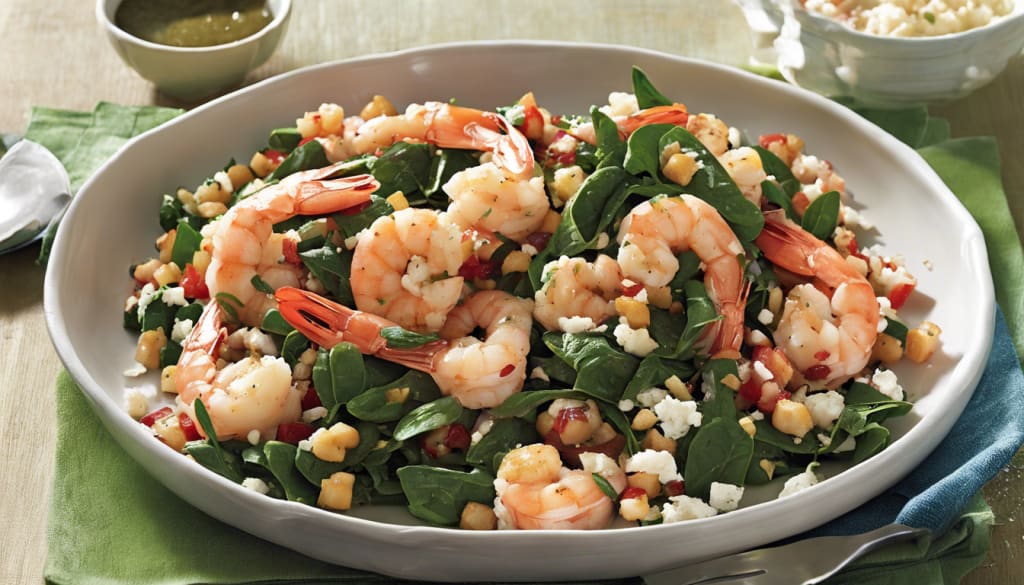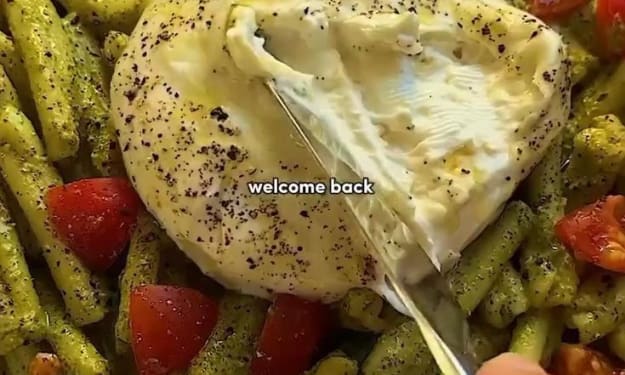Shrimp with Salsa Skillet Delight: Spinach and Feta Fusion
An Easy, Nutritious, and Flavorful Seafood Recipe

Discover the Secrets of Fat Burn Kitchen
Choosing the Right Ingredients
Selecting Quality Shrimp
When selecting shrimp for the skillet dish, it is crucial to opt for individually frozen (IQF), head-off, peel-on shrimp. These tend to retain freshness better and are easier to handle when preparing [6]. Freshness is key, so one should avoid shrimp that smell like ammonia or appear limp, slimy, or disintegrated, as these are indicators of spoilage [6]. For those concerned with sustainability, choosing freshwater shrimp certified by groups like the Marine Stewardship Council or Aquaculture Stewardship Council ensures both quality and environmental responsibility [6].
Best Types of Salsa for Skillet Dishes
For a vibrant salsa component, using freshly diced tomatoes, red onions, and a mix of cilantro and lime juice can enhance the dish's flavor [7]. It is beneficial to prepare salsa a few hours ahead to let the flavors meld together effectively [9]. For a more textured salsa, combining these ingredients in a food processor and pulsing three times provides the perfect consistency before adding it to the skillet [9].
Choosing Fresh Spinach and Feta Cheese
Selecting fresh spinach involves ensuring the leaves are vibrant and free from wilting or blemishes. Cooking spinach just until it begins to wilt helps in preserving its color and nutrients, making it a perfect addition to the skillet [10]. When it comes to feta cheese, opting for goat feta can introduce a sharp, tangy flavor that complements the sweet and earthy tones of the spinach [12]. It is advisable to adjust additional seasonings since feta can be salty [12].
Preparation Techniques
Cleaning and Preparing Shrimp
Inspecting and Deveining Shrimp: Begin by inspecting the shrimp to ensure they are fresh and free from any signs of spoilage. If the shrimp are still in their shells, use sharp scissors to cut along the middle back of each shrimp, leaving the tail intact [13]. Next, using a sharp paring knife, make a slit along the dark vein on the back of the shrimp, which is the intestinal tract, and gently remove it [14] [15]. This step is crucial for both aesthetic reasons and to improve the texture of the shrimp.
Peeling the Shrimp: There are several methods to peel shrimp effectively. One common method is to remove the shell by pulling it away from the body, starting at the legs and working towards the tail, which can be left on for ease of handling if the shrimp will be served as finger food [14]. Alternatively, kitchen shears can be used to cut the shell along the outer curve and then peel it off [14].
Rinsing and Drying: After deveining, rinse the shrimp under cool running water to remove any residual shell fragments or vein pieces. Pat the shrimp dry with paper towels before proceeding with cooking [15]. This step ensures that the shrimp are clean and ready for seasoning or marinating.
Optimal Slicing Techniques for Garlic and Lemon Zest
Preparing Garlic for Cooking: To prepare garlic, start by peeling the cloves. This can be done by lightly crushing them with the heel of a knife, which helps to loosen the skin [16] [18]. For dishes that require finely minced garlic, chop the peeled cloves finely using a rocking motion with the knife. This technique helps to create an even mince, which is ideal for evenly distributing the garlic flavor throughout the dish [18].
Extracting Lemon Zest: When using lemon zest, it's important to avoid the bitter white pith. Use a microplane grater for fine zest, perfect for adding to dressings or sauces [17]. For more textured applications, such as marinades or garnishes, julienne the zest using a sharp chef's knife to create thin strips [17]. This method preserves the potent flavor of the lemon and makes the zest versatile for various culinary uses.
By following these preparation techniques, one ensures that the ingredients are ready to impart their full flavor and texture to the dish, enhancing the overall quality of the shrimp with salsa skillet delight.
Cooking the Dish
Step-by-Step Cooking Process
Start by Cooking the Rice: Before focusing on the shrimp, begin by cooking rice as this component takes longer to prepare. Cooking shrimp will only require about 5 minutes [20].
Sautéing the Shrimp: In a pan, melt butter and add the shrimp. Cook them for about 2 minutes before adding the salsa. Once added, bring the mixture to a boil, then reduce the heat to medium-low and let it simmer until the salsa thickens slightly. Taste and adjust the seasoning with salt if needed [20].
Adjusting Heat Levels for Perfectly Cooked Shrimp
Choosing the Right Pan: When sautéeing shrimp on the stovetop, use a large skillet to prevent the shrimp from overlapping. This ensures each shrimp has maximum contact with the hot surface, allowing for an evenly caramelized exterior [22].
Heat Management: Heat a stainless-steel or nonstick skillet over medium-high heat. Season the shrimp with kosher salt and freshly ground black pepper, then add olive oil to the pan. Arrange the shrimp in a single layer and cook without moving them for 2 minutes for medium shrimp, or adjust the time slightly depending on their size. This method helps to develop a golden crust without overcooking the shrimp [22].
Incorporating Spinach Without Overcooking
Preparing the Spinach: Begin by heating olive oil in a large skillet over medium heat. Add smashed garlic cloves and cook until they start to brown, which takes about 1 minute. Then add the spinach to the pan, pressing it down as needed to make it all fit [27].
Cooking the Spinach: Cover the pan and let the spinach cook for 1 minute. Remove the lid and stir, ensuring the spinach cooks evenly. Cover again and cook for an additional minute. Remove the pan from the heat while some leaves are still slightly unwilted, allowing them to finish softening off the heat [27].
Final Touches: Sprinkle salt, pepper, and lemon zest evenly over the spinach. This adds a fresh burst of flavor and prevents the spinach from becoming soggy or mushy [27].
Discover the Secrets of Fat Burn Kitchen
Serving Suggestions
Pairing with the Right Flatbread
When serving the Shrimp with Salsa Skillet Delight, choosing the right base can elevate the dish significantly. For a delightful pairing, consider using a flatbread as the base. This allows for a crisp texture that complements the succulent shrimp and creamy feta. To assemble, place the flatbread on a baking sheet, evenly distribute feta over the flatbread, then top with shrimp. A drizzle of the leftover olive oil, chili powder, and garlic mixture from the shrimp pan adds an additional layer of flavor [29].
Garnishing with Feta for Enhanced Flavor
Feta cheese is not just a topping but a flavor enhancer that pairs beautifully with many dishes, including this shrimp skillet delight. Its tangy profile can enhance the overall taste of the meal. After baking the flatbread, adding crumbled feta provides a sharp contrast to the mild, creamy elements of the dish. For an extra touch of freshness, consider garnishing with fresh parsley and offering lemon slices on the side for those who appreciate a zesty flavor boost [30] [31] [32] [33].
About the Creator
Let's Cook
We're bringing together recipes from around the globe, sharing our best dishes, and spreading happiness through food ❤️.
Enjoyed the story? Support the Creator.
Subscribe for free to receive all their stories in your feed. You could also pledge your support or give them a one-off tip, letting them know you appreciate their work.






Comments
There are no comments for this story
Be the first to respond and start the conversation.